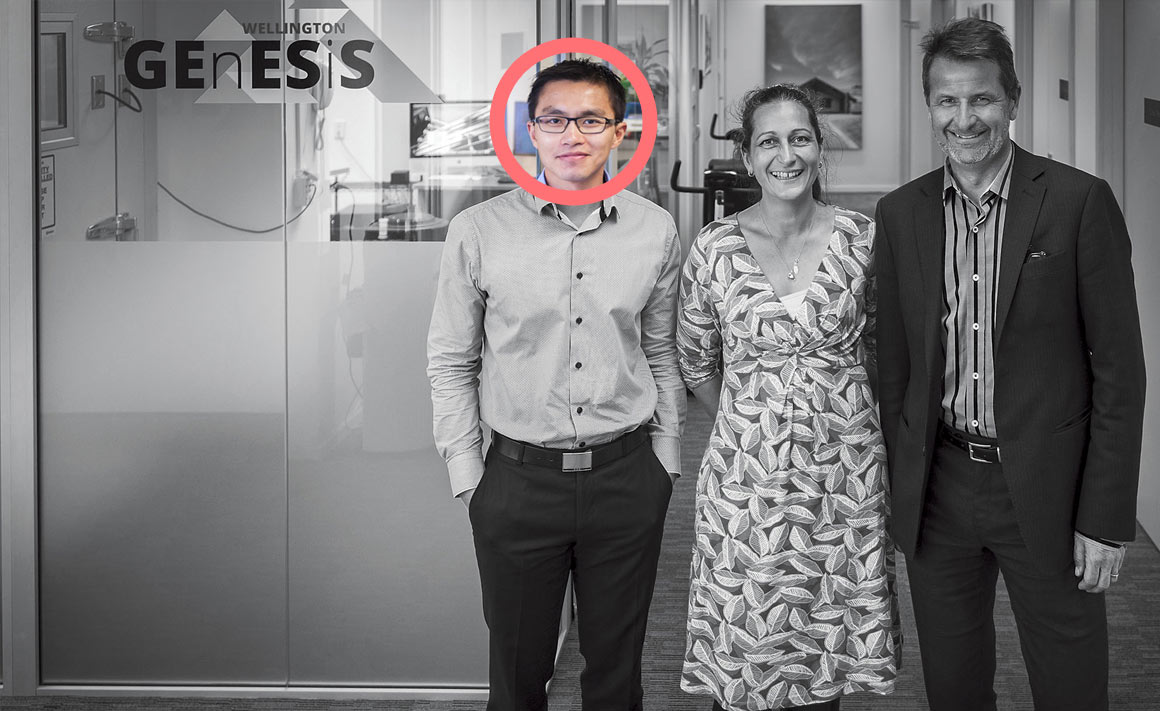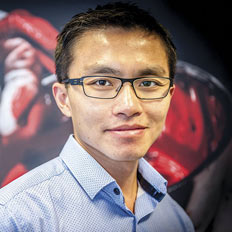 Monday 3 February 2014 9:47am
Monday 3 February 2014 9:47amAssociate Professor Shieak Tzeng's research seeks to find ways to better protect the brain after stroke and other injuries. He is collaborating with others to research brain blood flow and protect the brain from injury as a result of cardiovascular disease.

“Throughout human evolution, the brain has increased about 350 per cent in size, but brain blood flow increased by an amazing 600 per cent. This is crucial for how our intelligence has evolved, but also means that our brain is a blood-guzzling fuel hog that can be easily damaged by vascular disease,” says Tzeng.
The brain is very sensitive to oxygen starvation – even brief periods of inadequate blood flow can lead to death or permanent disability – and stroke is the second leading cause of mortality in the world.
“I became interested in optimising blood flow during brain injuries such as stroke where there are relatively few treatments available. On average, only six per cent of New Zealanders are getting targeted stroke treatment,” he says.
His team works with others in the Centre for Translational Physiology (CTP) in three main areas to ensure the brain is getting enough oxygen when at its most vulnerable: in acute stroke, in neonatal work with Dr Max Berry, and in intensive care and during cardiac surgery with Dr Sean Galvin (Capital Coast & District Health Board).
“We aim to combine the existing groups' research with medical technology and bring that to the patient at the point of care,” he says.
Tzeng came with his family to New Zealand when he was six years old. He grew up in Auckland and studied medicine at Otago where his interest in research began.
“In second year in Dunedin, I took a job as a research assistant in the Department of Orthopaedic Surgery with a surgeon and physiologist – and I loved it. When I started my clinical medical training in Wellington, I did a conjoint medical and PhD degree looking at how breathing is controlled, and on interactions between the heart and brain with breathing function.”
Tzeng received a Heart Foundation fellowship for Harvard Medical School in the US and did postdoctoral training at the Spalding Rehabilitation hospital on computational physiology, working at the “interface between technology and human physiological modelling – using bioengineering methods to understand how the body functions”.
A Sir Charles Hercus Fellowship from the Health Research Council brought him back to Wellington in 2011 to set up a research group combining physiology with bioengineering.
Now Tzeng brings multidisciplinary teams together to help transform health-care delivery. He is a part of the University of Otago's Centre for Bioengineering and now chairs the research arm of an international consortium, the Cerebral Autoregulation Research Network (set up in 2011).
“The work we do here is well connected into a much wider web internationally and, actually, we are in the driving seat for much of it, co-ordinating national and international research initiatives,” he says.
A current research focus is developing “point-of-care technologies” that help clinicians monitor and treat brain injuries.
“We're combining technological innovation, bench-top simulation and pre-clinical modelling. One device we're developing will be small and portable enough to monitor brain health at the bedside or during surgery,” Tzeng says.
Eventually it will help clinicians assess the brain's metabolic activity to improve the management of brain injuries without the need for invasive monitoring. When brain oxygenation is compromised, clinicians rely on crude bedside measures such as blood pressure or peripheral oxygen levels to guide therapeutic interventions. But these measurements tell little about what's really happening in the brain.
The new device will be based on the same physics – nuclear magnetic resonance – that's behind the giant cylindrical $3 million MRI scanners used in hospitals.
“Using the technologies individually or all at once at the bedside, we can potentially derive very precise real-time information – watch things play out in real-time: for example, administering a drug, we can see what is happening and stop if it is doing harm within minutes.
“For diseases like acute stroke, where the treatment window is just minutes or hours, this kind of technology is essential for good treatment decisions. If a patient is undergoing cardiac surgery, for example, they cannot be wheeled through to have an MRI mid-operation, so we'll bring the technology to the patient.
“Eventually we hope to combine the right devices with the right algorithms to measure what's happening in the brain and, potentially, many other organs in the body in real time, creating proactive rather than reactive health-care systems. That's where our research is heading.”
In another flagship project, Tzeng is working with collaborators nationally and internationally to design and build a scalable multiparameter database to aggregate clinical and physiological data generated in the intensive care unit (ICU).
This would provide the digital infrastructure to capture clinical care processes, analyse complex data streams and integrate all the decision support systems during this critical time of precision care. Currently, no existing data source fully enriches New Zealand's capacity to deliver precision intensive care.
“The database will move us away from a rather imprecise 'one-size-fits-all' approach to allow a better use of all the data collected in ICU, leading to better treatment,” says Tzeng.
Funding
- Health Research Council
- Ministry of Business, Innovation and Employment
- National Heart Foundation
- Lotteries Health